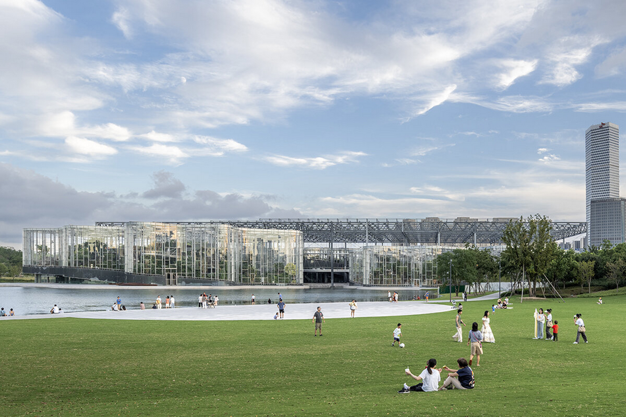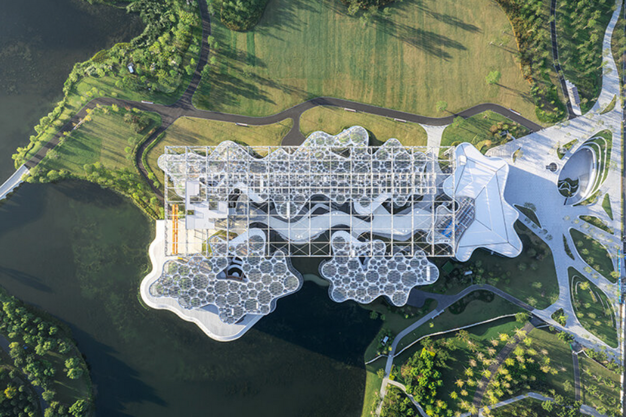The newly completed Expo Cultural Park Greenhouse by Delugan Meissl Associated Architects (DMAA) in Shanghai reflects the shifting global recognition of nature as a critical part of our living environment. This latest project integrates DMAA's technical and cultural knowledge in greenhouse design, presenting a new approach that prioritizes sustainability at every level.
In Shanghai's Pudong district, known for its growing skyline, the Expo Cultural Park now stands as a sustainable urban solution amid rapid development and the environmental pressures of urban expansion. Shanghai's environmental challenges, including high pollution, water shortages, and rising temperatures, have prompted the city to pursue radical, large-scale projects aimed at preserving natural habitats and pushing forward China's sustainability agenda.

From industrial site to urban park in Shanghai
Once home to a coal-fired power plant and steelworks, the site of Expo Cultural Park was remodeled for Expo 2010 before being reimagined by Delugan Meissl Associated Architects as a large recreational space and greenhouse in central Shanghai. The new project repurposes the steel structure of a former industrial hall, integrating organically shaped pavilions beneath this framework. This duality of industry and nature and of tradition and future illustrates Shanghai's historical turning point toward a greener, more sustainable urban core.
Traditional greenhouses are energy-intensive, and the architects' design aims to counter this by creating a zero-energy building. Single glazing was chosen for the structure based on simulations showing that it would be more energy-efficient than double glazing, as it reduces heat loss without the need for artificial lighting. The design incorporates a naturally ventilated roof with adjustable openings, while a pool with integrated photovoltaic panels provides both cooling and energy for the greenhouse.

Diverse biomes with pavilions
Shanghai's Expo Cultural Park Greenhouse is organized into three distinct pavilions. The first pavilion replicates the arid environment of a desert, complete with sandy and rocky landscapes supporting drought-tolerant plants at risk of extinction. The second pavilion contrasts this with a lush tropical rainforest, while the third pavilion features vertical flower gardens and serves as a flexible space for traveling exhibitions. A terrace above these pavilions offers panoramic views of both the park and the surrounding urban landscape.
Within and around the greenhouses, a network of pathways allows visitors to experience a carefully orchestrated flow through the space. Transparent parapets and graded pathways shape the pace and movement of visitors, enhancing their connection to the varied ecosystems. Inspired by natural water cycles, the water levels vary between desert and tropical areas, drawing attention to the issue of water scarcity — a pressing concern in the era of climate change. The fluid form of the facade symbolizes this adaptable relationship between humans and nature, becoming a visual and functional motif of the project.
Source: Design Bloom
